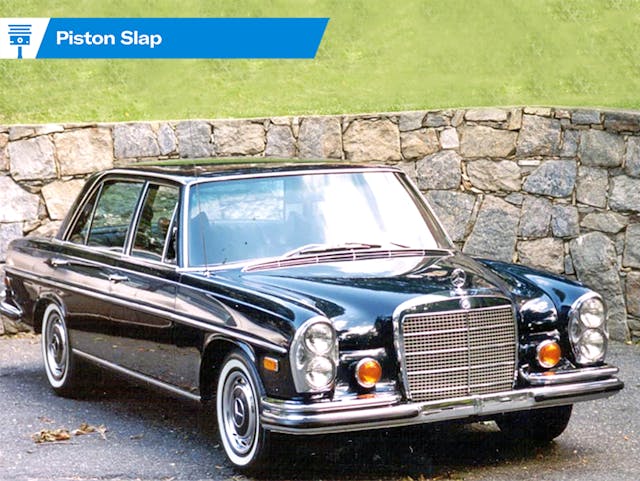Media | Articles
Piston Slap: When the air slide valve loses its glide? (Let’s try this again)

Sajeev writes:
I gave some bad advice in a previous last Piston Slap. And while this is far from the first time I got it wrong, I am glad two people corrected me so that I may correct myself. The last time we spoke about this 1973 Mercedes-Benz 280 SEL 4.5, I said:
“Bosch D (or is this K?) Jetronic systems require specialized knowledge.”
The vehicle in question indeed used Bosch D-Jetronic; perhaps I shouldn’t have doubted myself with the mention of K. But wait, it gets worse.
“Who knows, after nearly 50 years of heat cycling, maybe that internal spring lost its progressive-rated sprung?”
Marketplace
Buy and sell classics with confidence
Nope! I got it backwards, because the Air Slide Valve (a.k.a. auxiliary air valve) is open when cold and closes when it heats up. If the ASV’s internal spring lost its aforementioned sprung, the idle will be higher than expected when the engine is warm. Which means the OP’s issue of low idle/stalling is likely resolved elsewhere.
That said, a Jetronic-savvy friend further corrected me by adding that “a good way to test the ASV is to squeeze the elbow when the engine is warm. If idle stumbles or tries to die, it is leaking. Yes they can be DIY rebuilt as you suggested, but I don’t think that’s the issue here.” He went further, discussing what to check on the D-Jetronic system:
- Inspect the vacuum hose that goes between the pressure sensor and the manifold. It must be kink free and not collapse under vacuum.
- Always check the condition of the electrical connections, as Mercedes-Benz used copper here. Pay special attention to the ground wires, as many times the issues stem from weak grounds. Sand or polish away corrosion/oxidation, check the fuses, clean the connections at the fuse box, and replace anything if it looks suspect.
- Next, check the ignition. Many times the advance isn’t working.
- Then check the injectors. If original, they’re probably tired. A lot of times you can check for spray quality, leaks, etc. and if they’re not flowing well, this could be the problem.
- It is also good to check Temp Sensor 1 and 2 for good continuity.
Now this is me, your boy Sanjeev, talking: For #2, try a spray-on tarnish remover, as I’ve had fantastic luck with it. But don’t spray it on directly, instead spray on a cotton swab and apply the chemical with said swab.
After reading a very comprehensive forum post my friend shared with me, I have a newfound appreciation for Bosch’s D-Jetronic fuel injection system. While my antiquated fuel metering system of choice will always be Ford’s short-lived EEC-III set up, I learned a fair bit after making this significant error. And I hope you learned something too.
Have a question you’d like answered on Piston Slap? Send your queries to pistonslap@hagerty.com, give us as much detail as possible so we can help! If you need an expedited resolution, make a post on the Hagerty Community.









